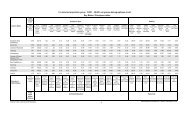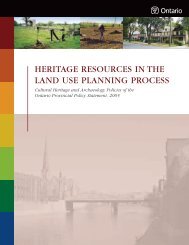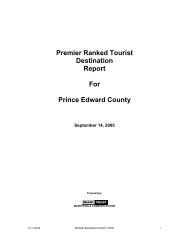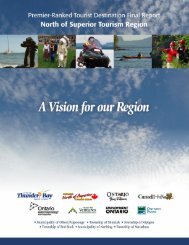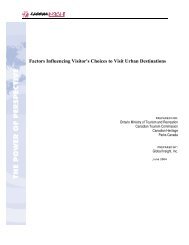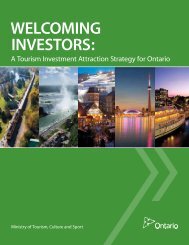Management Guidelines For Forestry and Resource-Based Tourism
Management Guidelines For Forestry and Resource-Based Tourism
Management Guidelines For Forestry and Resource-Based Tourism
- No tags were found...
You also want an ePaper? Increase the reach of your titles
YUMPU automatically turns print PDFs into web optimized ePapers that Google loves.
<strong>Management</strong> <strong>Guidelines</strong> for <strong>For</strong>estry <strong>and</strong> <strong>Resource</strong>-<strong>Based</strong> <strong>Tourism</strong> – ADVICE TO PRACTITIONERStools <strong>and</strong> approaches for every value. Local circumstanceswill determine the appropriate range of tools<strong>and</strong> techniques to utilise.Any operational prescription which proposes to reservean area from forest harvesting, when coupled withactivities which would also prevent natural disturbance(i.e. active fire suppression), should be made with theknowledge of potential future impacts on the naturalforest condition.Similarly, any operational prescription which proposesselection harvest or partial removal should only bemade after evaluation of the characteristics of the foresttrees on the site <strong>and</strong> an analysis of potential futurevegetative conditions. Certainly these are effective prescriptionsin some situations.The plant <strong>and</strong> wildlife species have evolved to respondto natural cycles of disturbance, which creates theoverall forest structure.Solutions proposed by individual stakeholders or smallgroups of stakeholders must ultimately be shown to beconsiderate of issues such as habitat, diversity, ecosystemrelationships <strong>and</strong> soil/site capabilities.<strong>For</strong>ested ecosystems are very complex relationships ofsoil, moisture, nutrients, bacteria, fungi, plants, invertebratewildlife species <strong>and</strong> vertebrate wildlife species.These natural complexities are further complicated byour desire to achieve economic <strong>and</strong> social objectivesfrom the use of our forested <strong>and</strong> aquatic areas.Vegetation communities will change on every site overtime. It is necessary to consider an overall strategy tomanage this change as you consider the operationalprescriptions that will be used within a forest managementplan.2.1.3 Contacts And CommunicationsThe preparation of a forest management plan requiresa significant commitment of resources to ensuresuccessful completion.In simplified terms the tasks include:• Assembling a multi-disciplinary planning team <strong>and</strong>local citizen committee;• Assembling data <strong>and</strong> background information(i.e. forest st<strong>and</strong> information, resource values);• Identifying <strong>and</strong> verifying tourism values ;• Modelling for future tree <strong>and</strong> wildlife species;• Analysis of management alternatives;• Identifying potential forest operating areas;• Identifying <strong>and</strong> meeting with stakeholders;• Developing prescriptions to protect values;• Documentation of decisions <strong>and</strong> writing pl<strong>and</strong>etails;• Preparation of maps <strong>and</strong> display material;• Public consultation.The plan author <strong>and</strong> other members of the planningteam must identify, early in the plan preparation period,the resource values, the values of stakeholders, the stakeholderidentities, preferred <strong>and</strong> optional operating areas.All participants must recognize that there are timing <strong>and</strong>availability constraints upon both resource-based tourismoperators (busy seasons, marketing shows, etc.) <strong>and</strong> planauthors (information centres, data updates). It is oftennecessary to establish individual strategies to maintaineffective communications between participants.The plan author <strong>and</strong> other members of the planningteam must also learn about the factors that influenceguests of the resource-based tourism facilities whenselecting a holiday package.In the development of a RSA the plan author willcontact each resource-based tourism stakeholder in thelicence area to begin discussions that will allow:• A sharing of information;• The establishment of a working relationship;• The identification of values of each party;• A proactive approach to resolving issues that arise;• Maximum flexibility to plan operations <strong>and</strong> prescriptionsto minimize <strong>and</strong> mitigate impacts;• Avoidance of "last minute" issues that delay planproduction <strong>and</strong> cause conflict with stakeholders.Participation in the planning process also requiresa significant commitment from other resourcestakeholders.7



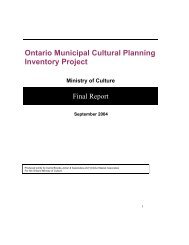
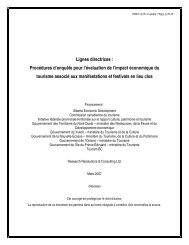
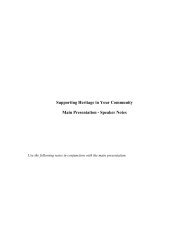
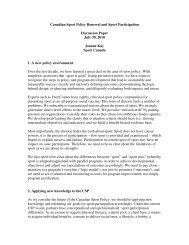
![THIS AGREEMENT made this [date], between [name of owner] (the ...](https://img.yumpu.com/49827605/1/158x260/this-agreement-made-this-date-between-name-of-owner-the-.jpg?quality=85)

